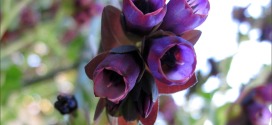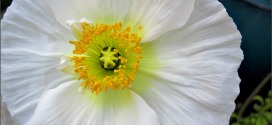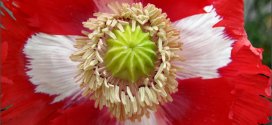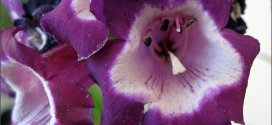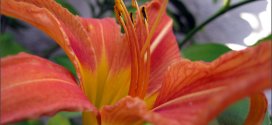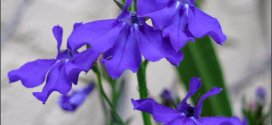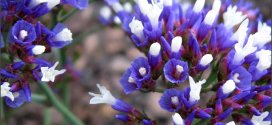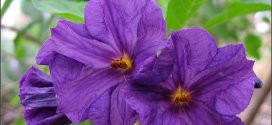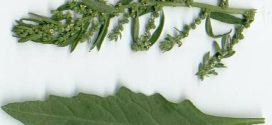Honeywort, Blue Shrimp Plant, Blue Wax Flower, Cerinthe major ‘Purpurascens’. This plant is attractive to butterflies, birds, and bees. The word “honeywort” means a plant that produces a lot of honey. Average Water Needs; Water regularly; do not overwater Family: Boraginaceae Genus: Cerinthe (ser-IN-thee) (Info) Species: major (MAY-jor) (Info) Cultivar: Purpurascens Additional cultivar information: (aka Purpurescens) Synonym:Cerinthe major …
Read More »admin
Poppy – Icelandic
The Iceland Poppy is a boreal flowering plant. It is native to subpolar regions of Europe, Asia and North America, and the mountains of Central Asia, but not in Iceland!!! Iceland poppies are hardy but short-lived perennials, often grown as biennials, that yield large, papery, bowl-shaped, lightly fragrant flowers supported by hairy, one foot, curved stems among feathery blue-green …
Read More »Poppy – Danish Flag
The Danish flag poppy is a beautiful flower. Early in spring, I bought a 4-inch port with small leaves and a promise of a poppy that looks like the Danish flag. Many weeks later, this plant is getting taller and taller and the leaves are larger and larger. I had lost the plant tag so I did not even know …
Read More »Penstamon – Purple
Penstemon is a western United States native that has colorful tubular flowers on tall spikes. This prairie plant thrives in hot, sunny conditions and is a stunning addition to wildflower plantings. Another common name is beardtongue. About This Plant Penstemon forms dense spikes of tubular flowers in early to mid summer. Flower colors include pink, blue, red, purple, and white. …
Read More »Day Lily – Tiger
Hemerocallis fulva, the orange day-lily, tawny daylily, tiger daylily, fulvous daylily or ditch lily (also railroad daylily, roadside daylily, outhouse lily, and wash-house lily), is a species of daylily native to Asia. It is very widely grown as an ornamental plant in temperate climates for its showy flowers and ease of cultivation. It is not a true lily in the …
Read More »Salvia – Blue Hills
Salvia × sylvestris ‘Blauhügel’ BLUE HILL. This salvia cultivar is a compact plant which typically grows only to 20″ tall. Features densely-flowered, spike-like racemes of pure blue flowers which bloom in June and continue throughout the summer. Flowers are attractive to bees and butterflies. A mint family member which has narrow, dark green, basal leaves (to 5″) and smaller stem …
Read More »Primrose
English Primrose, Primula vulgaris Family: Primulaceae Genus: Primula (PRIM-yew-luh) (Info) Species: vulgaris (vul-GAIR-iss) (Info) Synonym:Primula acaulis Synonym:Primula malacoides Category: Alpines and Rock Gardens Perennials Height: under 6 in. (15 cm) 6-12 in. (15-30 cm) Spacing: 12-15 in. (30-38 cm) 15-18 in. (38-45 cm) Hardiness: USDA Zone 4a: to -34.4 °C (-30 °F) USDA Zone …
Read More »Sea Lavender
Sea Lavender. Herbaceous Perennial Flower Also known as Statice, Statice Plumbago Limonium latifolium Plumbaginaceae Family Synonym: Statice latifolia Tolerant of droughty soil, this sun-loving perennial delivers dense clouds of blue to pink-purple flowers rising above dark green basal rosettes. Delicate and airy in the garden and as a dried flower. Sunlight: full sun Shade from hot …
Read More »Blue Potato Bush
The fragrant flowers of Blue Potato Bush (Lycianthes rantonnetii, also known as Solanum rantonnetii, and Paraguay nightshade), provide a focal point to a tropical or cottage garden. Surrounded by other sun-loving tropical and subtropical perennials, annuals and bulbs, the large shrub blooms year-round in frost-free gardens. Native to Argentina and Paraguay, the blue potato bush is hardy in U.S. Department …
Read More »Epazote
The epazote herb is commonly used in the cuisines and traditional medicines of central and southern Mexico and Guatemala. Epazote has a strong taste and aroma, so not everyone takes to it right away. It can be somewhat of an acquired taste, but it adds a wonderful rustic layer of flavor to many dishes. While it is best to use …
Read More »